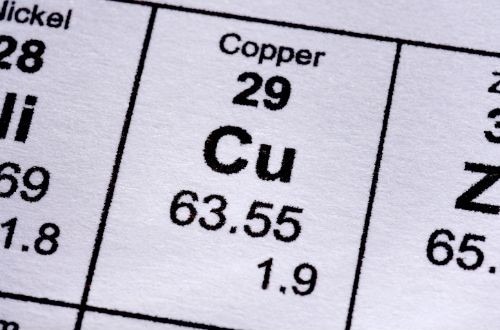Combating Bacteria and Viruses with Copper
The History of Copper:
Copper has been around for centuries and is one of the most abundant chemical elements found on earth. Did you know that copper has far more capabilities than what we typically think of today? Copper has antimicrobial abilities and can help to kill harmful bacteria within minutes. It has been used for centuries to fight off microbes far before microbes were ever identified or named.
 Back in the Ancient Greek, Aztec, and Roman times, copper was used as a sterilization agent. There is evidence today that copper was used to treat wounds, and even added into their water supply to make it drinkable. It was also used for hygiene purposes, in which they’d add copper into their water supply and then clean themselves with it to kill germs and other harmful bacteria. Ancient Aztecs were also known to gargle copper in order to combat sore throats and infections.
Back in the Ancient Greek, Aztec, and Roman times, copper was used as a sterilization agent. There is evidence today that copper was used to treat wounds, and even added into their water supply to make it drinkable. It was also used for hygiene purposes, in which they’d add copper into their water supply and then clean themselves with it to kill germs and other harmful bacteria. Ancient Aztecs were also known to gargle copper in order to combat sore throats and infections.
Egyptians used copper for wound care. Egyptians would use copper to sharpen their swords, and it’s what they would fill their wounds with to prevent infection and speed up recovery time. They’d also use copper as a treatment to cure headaches, purify drinking water, and even to help with skin conditions.
Fast forward to the 18th century. It was around this point in time that the British Navy began utilizing copper coatings on the exterior of their ships to prevent algae and barnacle growth. This became a very common practice for many other ships soon after.
In the 19th century, 1939 to be exact, a German medical researcher came to the realization that copper miners didn’t experience symptoms of arthritis when they were working in copper mines. It was soon after that medical doctors began using a copper treatment for patients suffering from arthritis, sciatica, neck pain, and back pain.
It’s no secret that copper has been a hidden gem throughout history for its antimicrobial abilities. It’s been used in a large variety of different applications, however, the underlying reason for its use was the same throughout; To kill harmful germs and bacteria.
Copper’s Antimicrobial Abilities Explained:
Harmful germs can live on common touch surfaces for 30 days or more if not properly treated. Only in recent years has copper went under heavy investigation for its antimicrobial abilities and the findings have been drastic. Copper fights off a range of harmful bacteria and microorganisms that could potentially be seen as a threat to public health. Examples include MRSA, Influenza A, E. Coli, and Norovirus.
In order for the harmful bacteria and germs to die off, they must first make contact with the copper. This is through a process we know as contact killing. Once the germs have made contact with the copper is when the antiviral abilities kick in.
According to studies done by the Environmental Protection Agency, copper alloys can kill 99.9% of harmful germs and bacteria within 2 hours of direct contact with the germs and bacteria. In fact, copper has recently been registered by the EPA as the first real antimicrobial material.
Why does copper have antibacterial abilities? We’ll take a deeper dive into explaining just how copper may be used in the fight against deadly germs and viruses.

Copper’s atomic makeup is the primary reason it’s so powerful against killing bacteria and viruses. Copper helps to disrupt bacterial cell membranes. This means that copper ions can damage harmful bacteria’s cell membrane.
These ions destroy the DNA or RNA found in the bacteria’s cell. This is important because it means that no mutation can occur, which prevents the microbes from becoming resistant to copper alloys. Copper generates oxidative stress on the bacteria’s cells and creates hydrogen peroxide. The hydrogen peroxide then reacts with the copper ions to form reactive oxygen. This also damages and attacks the microbes. It interferes with the proteins needed to keep the bacteria alive and functioning. All of these unique attributes, as well as the fact that copper is so durable and can withstand wear and tear, have helped it to become the antiviral superhero that it is today.
Benefits of Copper on High-Touch Surfaces:
Now that we have a deeper understanding of just how beneficial copper can be in the fight against deadly viruses and bacteria, it’s also important to recognize the benefit of its use. Copper could be extremely beneficial in the fight against harmful diseases. Especially if it became more incorporated into our daily lives. By adding a copper coating onto high touch surfaces we interact with daily, copper could be the hidden gem that helps to decrease the spread of these viruses and diseases.
 Steel is predominately used in high-touch environments today because of its corrosive resistance and clean appearance. This is especially true within hospital settings. In hospitals, nearly everything is created with steel such as bed railings, door handles, and touch plates. However, steel has no antimicrobial properties, meaning there is no antiviral advantage to its use.
Steel is predominately used in high-touch environments today because of its corrosive resistance and clean appearance. This is especially true within hospital settings. In hospitals, nearly everything is created with steel such as bed railings, door handles, and touch plates. However, steel has no antimicrobial properties, meaning there is no antiviral advantage to its use.
Copper makes a large contribution on infectious control. In fact, a study was completed in 3 hospitals intensive care units (ICU) throughout the United States. The study found that when copper alloys were used on regular touch surfaces and cleaned often, there was a 90% reduction in the number of live bacteria. There was also a 58% reduction in infection rates.
Outside of the hospital setting, germs are still extremely prevalent in public spaces. Consider a grocery store. How many people do you think have touched the same exact cart as you on a day to day basis? How about on a week to week basis?
In a study done by the University of Arizona, researchers took samples from 85 shopping carts found in various grocery stores in West Coast cities. They found that these grocery carts had exponentially more bacteria than they measured in over 100 public restrooms in the area, including toilet seats and flushing handles. 50% of the shopping carts were housing E Coli and 72% had coliform bacteria. Due to how high the coliform bacteria were, they were also able to distinguish that fecal matter was present on the carts. They were also able to tell that there were approximately 138,000 bacteria per square inch of the shopping cart.
Carts are a haven for bacteria. Now consider the benefits of adding a copper coating onto cart handles. Incorporating copper onto grocery carts kills 99.9% of these harmful germs. Because copper only takes up to 2 hours to kill the germs after making direct contact with them, the germs won’t linger from one person’s use to the next. The same could be said about public toilets, light switches, doorknobs, and more.
Another key benefit of adding copper onto high touch surfaces is that the anti-microbial properties never wear off, even if the metal tarnishes through a process known as oxidation where the copper turns a greenish/blue hue over time. This means that its antibacterial abilities will remain the same throughout wear and tear it may be exposed to.
Copper has been a hidden gem throughout centuries of history. It was used in ancient times and throughout decades of history as a preventative and cure to deadly bacteria and viruses. As we continue to uncover all of the potential applications and properties of copper, it’s important to note that copper can and will be extremely beneficial in our fight against harmful diseases and bacteria. For more information on copper, visit the Copper Development Association website.
 Meet the Author: Jaclyn King
Meet the Author: Jaclyn King
Jaclyn is a Digital Marketing Specialist on the BTI Team. She serves as the Content Manager, where she primarily manages social media channels, SEO, Public Relations, and website development. To get to know more about Jaclyn, check her out on LinkedIn!